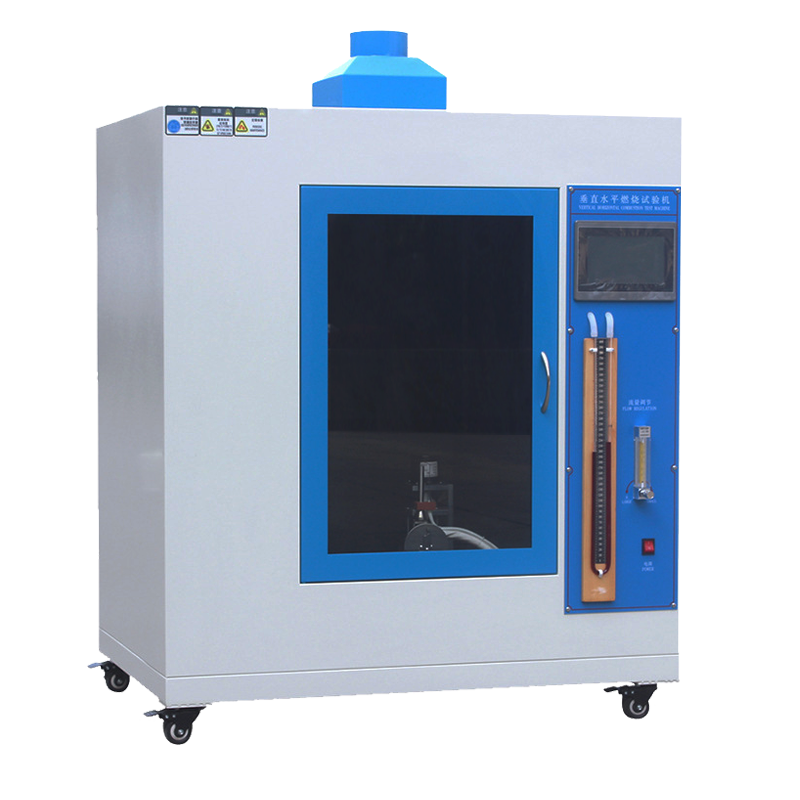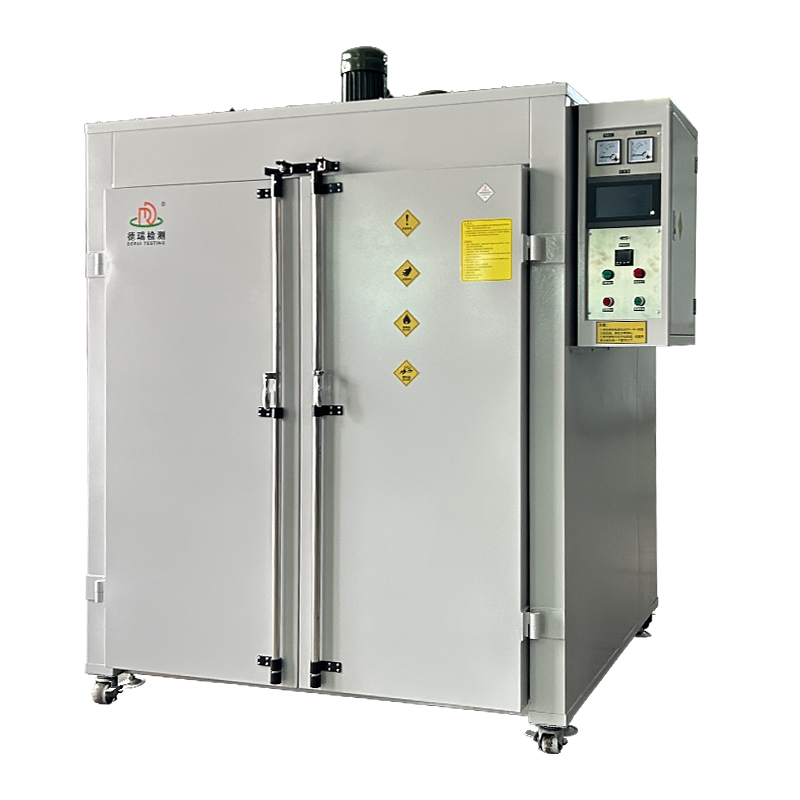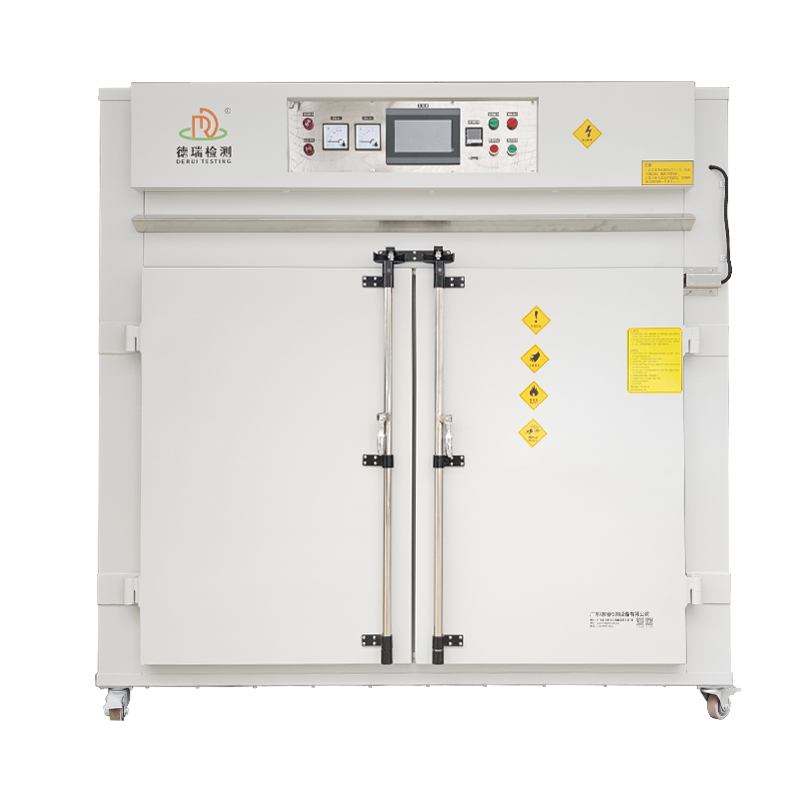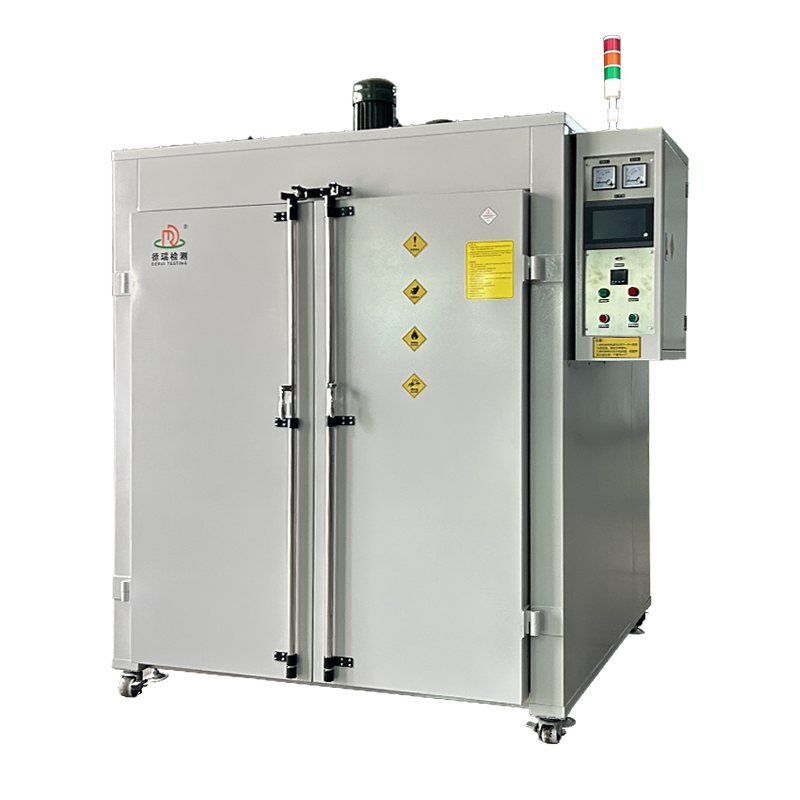Welcome!



Foam Material Vertical Combustion Tester Validating Foam Flammability
Product Description
STANDARD FEATURES
| Burning Chamber Capacity | ≥0.75m³ with glass observation door |
| Burning Angle | 20 。, 45 。, 90 。 (ie 0 。) adjustable |
| Flame Time | 0 ~ 99 minutes 99 seconds can be set |
| After Flame Time | 0 ~ 99 minutes 99 seconds can be set |
| After Glow Time | 0 ~ 99 minutes 99 seconds can be set |
| Burner Dimensions | The inner diameter of the nozzle is Ø9.5±0.3mm, the effective length of thenozzle is 100±10mm, and there is an air adjustment hole |
| Combustion Gas | LPG gas (Customize) |
| Flame Height | Adjustable from 20mm to 175mm as standard |
| Features | It is also equipped with lighting device, air extraction device, gas flow regulatingvalve, gas pressure gauge, gas pressure regulating valve, gas flow meter, gasU-shaped pressure gauge and sample fixture |
| Power | AC 220v 50HZ |




Features
PLC + Touch Screen Control: The device is equipped with a PLC and touch screen interface for intuitive operation and precise control of test parameters.
Automatic Ignition & Flame Adjustment: The Bunsen burner automatically ignites, and the flame height can be set arbitrarily to simulate different combustion scenarios.
High-Precision Timing: T1/T2/T3 recording time up to 9999 seconds with a minimum resolution of 0.1 seconds ensures accurate measurement of combustion characteristics.
Flame Application Time: Preset flame application time (0.1s-999.9s) with automatic timing and Bunsen burner return after reaching the set burning time.
Observation Window: The front side of the sample holder faces the equipment observation window, facilitating easy monitoring of the sample's combustion process.
Safety Features: Includes safety measures such as leakage protection and explosion-proof window protection to ensure the safety of personnel and equipment.
The key standards for foam material flammability testing include:
- ASTM D3014: Standard test method for determining the flammability of rigid cellular plastics.
- DIN 4102 B1/B2: German standards for construction materials, assessing flame spread and smoke density.
- BS 476 Part 6/7: British standards for surface spread of flame tests in construction.
- UL94: Standard for flammability testing of plastic materials, classifying materials based on燃烧 behavior in vertical and horizontal orientations.
- FMVSS 302: Federal Motor Vehicle Safety Standard for the flammability of automotive interiors.
- ASTM E84: Measures the surface burning characteristics of building materials, including flame spread and smoke density.
- ASTM E162: Evaluates the surface flammability of materials using a radiant heat energy source.
- ASTM E662: Measures the specific optical density of smoke generated by solid materials.
- ASTM D2863: Limited Oxygen Index Test (LOI) for measuring the minimum oxygen concentration to support combustion of plastics.
- These standards are crucial for ensuring that foam materials meet the necessary safety requirements in various applications, from construction to automotive interiors. Compliance with these standards helps in preventing fire hazards and enhancing product safety.
The UL94 standard classifies materials based on their flammability through a series of controlled tests that evaluate how the material burns in different orientations and under specific conditions. Here are the key classifications:
- HB (Horizontal Burning): This classification is for materials tested in a horizontal orientation. To qualify, materials must have a burning rate of less than 76 mm/min if thinner than 3 mm, or extinguish before reaching 100 mm .
- V-2, V-1, V-0 (Vertical Burning Tests): These classifications are for materials tested in a vertical position. They are based on the time it takes for the material to self-extinguish and whether it drips flaming particles:V-2: Burning stops within 30 seconds, with dripping allowed.V-1: Burning stops within 30 seconds, with non-flaming drips allowed.V-0: Burning stops within 10 seconds, with no flaming drips .
- 5VB and 5VA: These are the highest flame resistance classifications. Materials are subjected to more intense flame exposure:5VB: Burning stops within 60 seconds, no drips allowed, but a hole may develop.5VA: Burning stops within 60 seconds, no drips, and no holes .
- Specialized Tests for Foamed and Thin Materials: For materials like foams and thin films, additional classifications such as HF-1, HF-2, and HBF apply. These tests measure flame resistance specific to these materials:HF-1: Burning stops within 2 seconds, no flaming drips.HF-2: Burning stops within 3 seconds, flaming drips allowed.HBF: Horizontal burn test for foamed materials, measuring flame spread .
Recommended Products
Recently Viewed
 Flexible Vertical Combustion Tester, Configurable to Your Testing Needs
Flexible Vertical Combustion Tester, Configurable to Your Testing Needs Vertical Combustion Tester Offering Tailored Solutions for Different Industries
Vertical Combustion Tester Offering Tailored Solutions for Different Industries Building Material Vertical Combustion Tester, Ensuring Fire Safety
Building Material Vertical Combustion Tester, Ensuring Fire Safety Vertical Combustion Tester, Providing Reliable Testing Results for Research and Development
Vertical Combustion Tester, Providing Reliable Testing Results for Research and Development Vertical Combustion Tester, Features Automatic Data Recording and Analysis
Vertical Combustion Tester, Features Automatic Data Recording and Analysis
Contact Us
Guangdong Derui Testing Equipment Co., Ltd.



